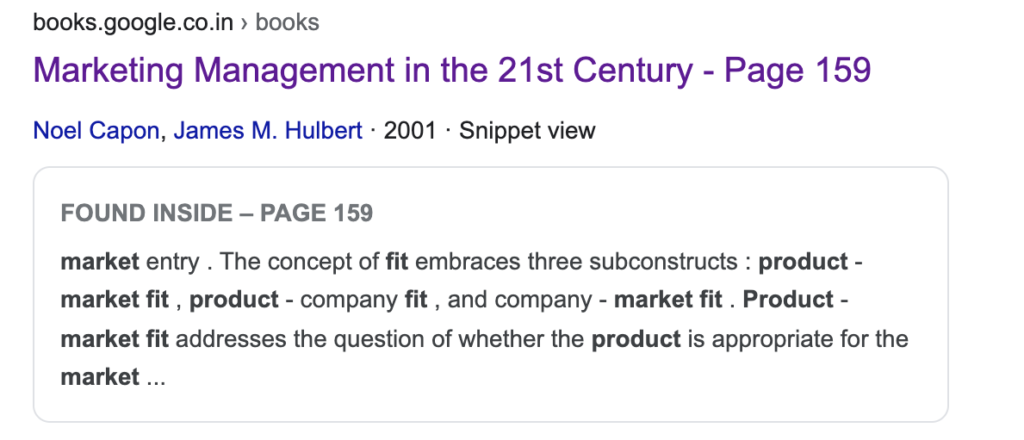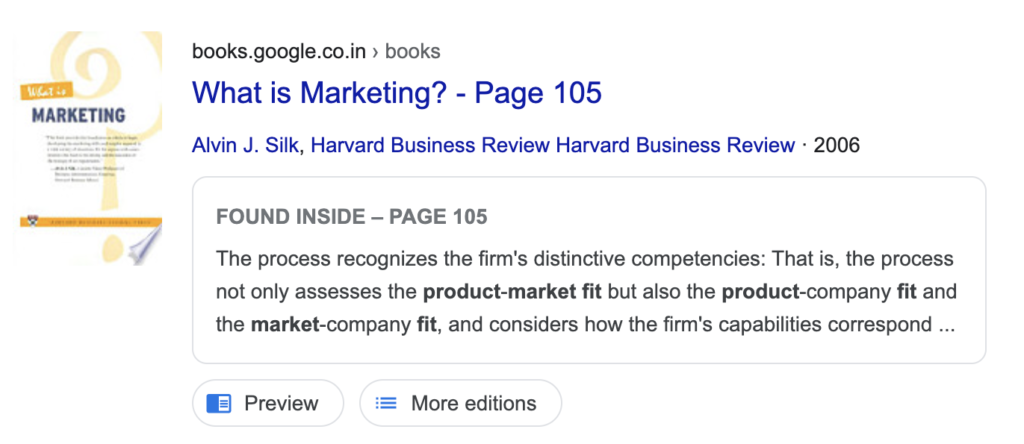An innocent google query around the origins of the term ‘product-market fit’ sent me down the internet rabbit hole a few nights back.
‘Product-market fit’ (or PMF hereafter) is a seminal concept in startupland. It is considered as a turning point in the life journey of every successful startup, and not being able to achieve PMF is considered the leading cause of failure (see here and here).
The term & owes its popularity in large measure to the famous Marc Andreessen essay ‘The Only Thing That Matters’. In the essay, written in 2007, he defined it as “Product/market fit means being in a good market with a product that can satisfy that market”. Fifteen years hence, and with many competing definitions on the internet since, a better definition in my opinion would be the creation of a ‘repeatable, predictable, profitable market for the product’.
But we are deviating. Let us get back.
In his essay, Marc Andreessen credits Andy Rachleff, the founder of Benchmark, who subsequently founded Wealthfront, with the term. Interestingly Andy Rachleff in turn credits Don Valentine of Sequoia with the concept.
I started by searching for Rachleff’s and Valentine’s comments on the term on the web. I found no reference to them or any other startup founders or practitioners using the term ‘product-market fit’ or as Marc Andreessen puts it, ‘product/market fit’ anywhere before 2007 when Andreessen first used it. This is of course, not entirely surprising, as the term could have been in casual use in Silicon Valley, and Andreessen may have heard from Rachleff from a conversation.
What I did find, and this when I used the Google Books site to search for ‘product market fit’ was that Silicon Valley was not the inventor of the term. Well before Valley adopted the moniker, and adapted it to its needs, the term was in occasional, though not widespread use.
Let us trace its origins.
The earliest use of the term product market fit (or product/market fit as Marc Andreessen writes it) was in 1937.

Of course, the way the phrase is used here is entirely different from how Andy Rachleff or Marc Andreessen likely thought about it.
We then start seeing the term in the late 1960s in academic journals devoted to Economics…


…as well as Marketing.


It is worth noting that the term product-market fit was popular in the domains of international trade and tourism. The original product had to fit with the needs of the new countries (markets) after all. Some examples.





By the 1980s and ‘90s, the term is well-entrenched in Marketing.



Leading up to 2007, ‘product-market fit’ is now almost entirely found in marketing journals and books.



At some point in the mid-naughts, the term crossed over into the world of startup / tech management.
Steve Blank’s book ‘The Four Paths to the Epiphany’ published in 2005, which presaged the Lean Startup movement might well be the first startup book or publication to use the term ‘product market fit’.
On pg 26, it says “Broadly speaking, Customer Discovery focuses on testing whether a company’s business model is correct, specifically focused on whether the product solves customer problems and needs (this match of product features and customers is called product / market fit).” The term makes at least half a dozen more appearances in the book!
It is also worth noting that Andy Rachleff had started offering courses on entrepreneurship in the Stanford Graduate School of Business. It is possible that the phrase ‘product-market fit’ caught on through his interactions with his academic colleagues, or in general was in the air (as we can see from Steve Blank’s writings). It is also possible that Andy Rachleff derived it independently. Either way, he introduced the concept to Marc Andreessen, and of course, the rest is history.
